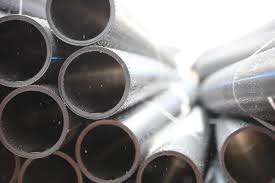Oct . 31, 2024 18:39 Back to list
China HDPE Pipe Dimensions and Sizes Guide for Various Applications and Industries
Understanding HDPE Pipe Sizes and Dimensions in China
High-Density Polyethylene (HDPE) pipes have gained immense popularity across various industries in China due to their strength, flexibility, and resistance to corrosion and chemicals. As infrastructure development accelerates, particularly in water supply and drainage systems, understanding the sizes and dimensions of HDPE pipes becomes critical for engineers, planners, and contractors.
HDPE Pipe Standard Sizes
In China, HDPE pipes are available in various standard sizes that comply with national and international standards. The most commonly used standards are the China GB/T 13663, which outlines the specifications for plastic pipes. HDPE pipes are typically measured in terms of their nominal diameter (DN), which ranges from small sizes (20mm) to large sizes (1600mm).
The dimensions of these pipes can be classified into two categories SDR (Standard Dimension Ratio) and OD (Outside Diameter). SDR is a crucial factor as it determines the pipe's wall thickness relative to its diameter. For instance, a common SDR value is SDR 11, where the outer diameter is divided by the wall thickness, indicating a sturdy pipe suitable for high-pressure applications.
Applications of HDPE Pipes
HDPE pipes are versatile and widely used in various applications, including water supply, sewage systems, gas distribution, and industrial applications. Their flexibility allows them to be installed in challenging environments, including areas with uneven terrain. The lightweight nature of HDPE pipes facilitates easy handling and installation, reducing labor costs significantly compared to traditional materials like concrete or steel.
china hdpe pipe sizes and dimensions

Advantages of HDPE Pipes
One of the main advantages of HDPE pipes is their resistance to chemicals and corrosion, making them an ideal choice for transporting potable water and chemicals. They also have a low friction coefficient, reducing energy loss during fluid transportation. Their durability extends their service life, often exceeding 50 years, which is an appealing feature for long-term projects.
Additionally, HDPE pipes are environmentally friendly. They can be recycled, reducing waste and promoting sustainability in construction practices. The ability to fuse HDPE pipes at joints creates a seamless and leak-proof system, minimizing the risk of contamination.
Conclusion
As China's infrastructure continues to evolve, the demand for HDPE pipes will likely increase. Understanding the sizes and dimensions of these pipes is essential for making informed decisions in pipe selection and installation. Whether for residential, industrial, or municipal projects, HDPE pipes offer a reliable and efficient solution to meet the growing demands of water management and distribution systems. Adhering to the appropriate standards and specifications ensures that projects can be executed effectively, maintaining the integrity and longevity of the plumbing systems they serve.
In summary, with their durability, flexibility, and eco-friendly qualities, HDPE pipes represent a key component in modern infrastructure development in China, paving the way for sustainable growth and effective resource management.
-
High-Quality PVC Borehole Pipes Durable & Versatile Pipe Solutions
NewsJul.08,2025
-
High-Quality PVC Perforated Pipes for Efficient Drainage Leading Manufacturers & Factories
NewsJul.08,2025
-
High-Quality PVC Borehole Pipes Durable Pipe Solutions by Leading Manufacturer
NewsJul.08,2025
-
High-Quality PVC Borehole Pipes Reliable PVC Pipe Manufacturer Solutions
NewsJul.07,2025
-
High-Quality UPVC Drain Pipes Durable HDPE & Drain Pipe Solutions
NewsJul.07,2025
-
High-Quality Conduit Pipes & HDPE Conduit Fittings Manufacturer Reliable Factory Supply
NewsJul.06,2025

